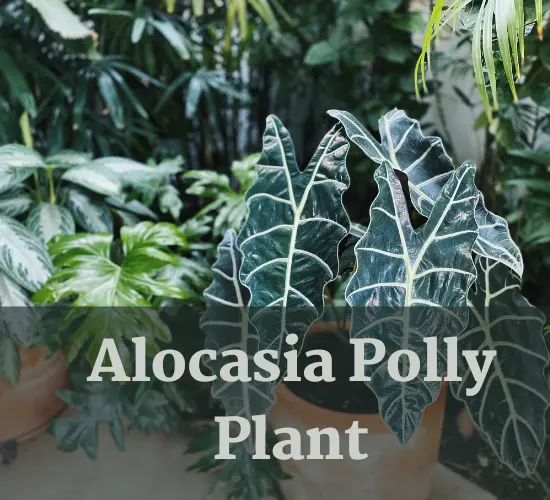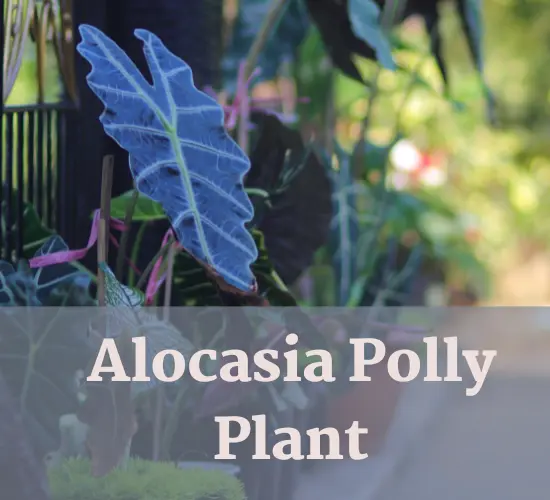Have you ever looked at your Alocasia plant and noticed that Alocasia Polly(Alocasia x amazonica) leaves turning yellow? If so, you are not alone. Yellowing leaves are a common problem for Alocasia plants, and they can be caused by a variety of factors.
However, with proper care techniques, you can prevent yellow leaves from occurring and ensure that your Alocasia plant thrives for years to come.
In this article, we will explore the causes of the yellowing Leaves of the Alocasia plant, including overwatering, inconsistent watering, low light, and insect infestations. We will also discuss the proper care techniques that can help prevent yellow leaves from occurring, such as providing adequate light, watering correctly, and addressing any pest problems.
By following these guidelines, you can save your Alocasia plant and enjoy its stunning foliage without the worry of yellowing leaves.
Table of Contents
Key Takeaways
- Overwatering and inconsistent watering are common causes of yellowing leaves on Alocasia plants.
- Proper care includes keeping the soil damp but not wet, providing appropriate lighting, and boosting humidity.
- A weakened or stressed Alocasia plant is more susceptible to insect infestations.
- Yellow and browning leaves are the first sign of root rot, and regular watering schedules and avoiding standing water are important for preventing it.
Causes of Alocasia Polly Leaves Turning Yellow

Alocasia Polly Leaves Turning Yellow can be caused by a variety of factors, including overwatering, inconsistent watering, low light, natural aging, and preexisting health issues. Overwatering is the most common cause of yellowing leaves, as Alocasia plants prefer to be kept damp but not wet or saturated.
Inconsistent watering can also create stress and cause yellowing, as these plants are not drought-tolerant. Additionally, yellow leaves may develop in very low light, and natural yellowing occurs in older leaves, particularly at the bottom of the plant.
However, yellowing can accelerate if the plant is already unhealthy, such as when it is stressed or has preexisting health issues. A stressed plant is more susceptible to yellowing leaves, as it may have difficulty taking in and using nutrients properly.
Natural aging is also a factor in yellowing leaves, as older leaves tend to yellow and die off to make way for new growth. However, if yellowing occurs at an accelerated rate or affects multiple leaves at once, it may be a sign of a larger issue.
Proper Alocasia care, including consistent watering and appropriate lighting, can help prevent yellowing leaves.
Proper Alocasia Care

Proper care practices for Alocasia plants include consistent soil moisture and appropriate lighting conditions. For example, an Alocasia plant kept in a bright, indirect sunlight location with well-draining soil and a regular watering schedule can thrive and produce new growth.
Here are some additional tips to ensure proper care for your Alocasia plant:
- Watering frequency is crucial for the health of an Alocasia plant. The plant likes to be kept damp but not wet or saturated, so make sure to discard any excess water in the saucer and avoid letting the plant sit in standing water.
- Boost humidity with regular misting, a humidifier, or a pebble tray to prevent the soil from drying out and causing the leaves to droop and brown.
- Alocasia plants prefer a well-draining soil mix that is rich in organic matter to prevent root rot. It is also important to fertilize the plant with a balanced fertilizer during the growing season to provide the necessary nutrients for healthy growth.
- Alocasia plants should be kept away from direct sunlight, which can burn the foliage. Instead, they grow best in bright indirect sunlight but can tolerate medium light. A grow light can also be used to provide appropriate light for the plant.
- Finally, it is important to have a regular maintenance routine for your Alocasia plant. This includes removing any dead or yellowing leaves, checking for signs of insect infestations, and repotting the plant as needed to ensure proper growth and health.
Insect Infestations
One potential threat to the health of Alocasia plants is insect infestations. A weakened or stressed Alocasia is more susceptible to infestations from common pests such as spider mites, scale, and mealybugs. These pests can drain the plant of moisture and nutrients, causing yellowing and wilting of the leaves.
Preventing insect infestations is crucial for the health of Alocasia plants. Regularly inspecting the plant for signs of infestation, such as webbing, sticky residue, or tiny insects, can help identify and treat the issue early on.
Additionally, maintaining proper humidity levels and avoiding overwatering can help prevent infestations. If an infestation does occur, treating the plant with natural remedies such as neem oil or insecticidal soap can be effective in eliminating pests and restoring the health of the plant.
Frequently Asked Questions
Can Alocasia plants survive in low light conditions?
While Alocasia plants prefer bright indirect sunlight, there are low-light alternatives such as Alocasia Amazonica and Alocasia Micholitziana. However, these varieties may not grow as quickly or develop as vibrant colors in shade.
How often should I fertilize my Alocasia plant?
The frequency of fertilization for Alocasia plants depends on the nutrient requirements and growth rate. During the growing season, fertilize every two weeks with a balanced fertilizer. In winter, reduce to once a month. Avoid over-fertilization, which can lead to burnt foliage.
What is the best soil mix for Alocasia plants?
The choice between organic or inorganic soil mix for Alocasia plants depends on individual preference, as both have their advantages and disadvantages. Proper watering techniques, including consistent soil moisture and avoidance of standing water, are crucial for Alocasia plant care.
Can Alocasia plants be propagated from cuttings?
Alocasia plants can be propagated through cutting propagation with the use of rooting hormone or water propagation. The container size should be appropriate for the cutting, and the plant should be kept in a warm, humid area until roots develop.
Are there any other common pests that can affect Alocasia plants?
Spider mites and thrips are common pests for Alocasia plants. Pest control techniques include using insecticidal soap or neem oil, wiping leaves with alcohol, and isolating infested plants. Regular cleaning and inspection can prevent infestations.
Conclusion
Yellowing leaves on Alocasia plants can be a frustrating problem, but with proper care techniques, it can be avoided. Inconsistent watering, overwatering, low light, and insect infestations are some of the common causes of yellowing leaves.
To prevent yellowing leaves, it is important to provide your Alocasia with adequate lighting, well-draining soil, and a consistent watering schedule.
In addition to these basic care techniques, it is also important to monitor your plant for any signs of insect infestations. If left untreated, these pests can cause significant damage to your plant, leading to yellowing leaves and stunted growth.
By inspecting your plant regularly and taking action at the first sign of infestation, you can prevent further damage and save your Alocasia.
In conclusion, proper care techniques are essential for preventing yellowing leaves on Alocasia plants. By providing your plant with the right conditions and monitoring for any signs of infestation, you can enjoy the stunning foliage of your Alocasia for years to come.
Don’t let yellowing leaves discourage you – with the right care, your Alocasia can thrive and become a beautiful addition to your home or office.
2 thoughts on “Troubleshooting Guide: Alocasia Polly Leaves Turning Yellow”